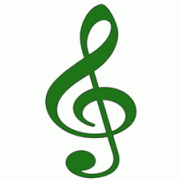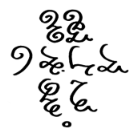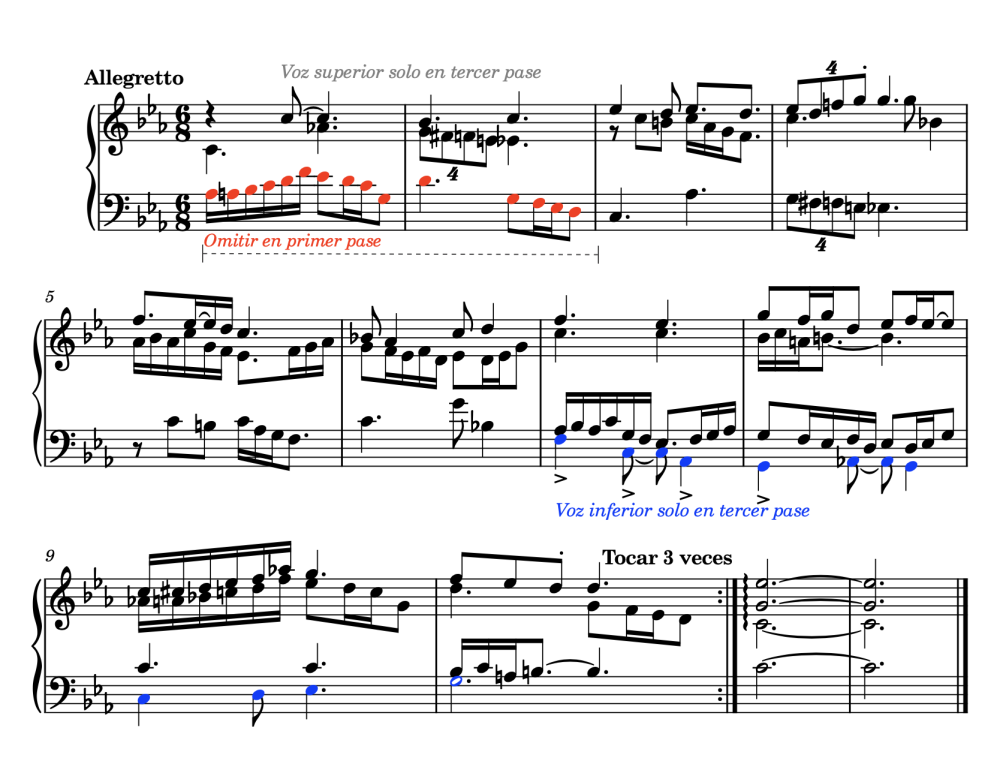All Activity
- Today
-
.thumb.png.8b5b433a341551e913a34392660bc95b.png)
Chorale in 31-tone equal temperament
PeterthePapercomPoser replied to benyamind's topic in Choral, Vocal
Hello @benyamind! I find the harmonies in this otherworldly and rich. The choral soundscape washes over with the thick church-like reverb. For a piece that is comprised of only chords it sure is quite interesting! I admit that on first listen I didn't appreciate it as much as I do now. It's definitely grown on me. Thanks for sharing! -
I must admit, at first I unfortunately hesitated to listen to it, knowing full well this gargantuan masterpiece, your self-termed best movement even in comparison to all of your other masterful works, could and would certainly blow me away in such a manner that trying to capture but the slightiest speck of its brilliance into a proper review would be pointless. Even this was a huge understatement, but now, having listened to it in its entirety and starting to recover from such a transcendental journey this masterwork has taken me through, it would be a waste not to express my utter admiration for this thoroughly complex, incredibly expressive marvel of musical endeavour you have managed to outdo yourself with, even to your own high standards. The solemnity and sorrowfully contained, tragicly yearning character of the first theme, followed by the intermittent protagonism of the cello from 6:00 onwards, all coupled with such a diverse array of accompaniment textures, gives these passages a very passionate and intimate timber which fits quite well with the whole thematic significance of the Lamentoso section. Even with the sheer amount of well-structured passages with enharmonic modulations, the choice of the main key for this first section of the movement is just as fitting: I have some remnants of chromatic synesthesia myself, and the sense of sorrow and despair provided by F-sharp minor in this context is far more intense to me than that of coadjacent keys like G minor or G-sharp minor, making it one of my favourite keys. The imitative build up by the end of the Lamentoso contrasts very effectively with the following passage that ends it right before the fugue. The harmonics in the violins between bars 199 and 202 reminded me of the sonority of the Chinese sheng and bamboo pipes (笙簫), which I find a pretty nice and idiomatic reference! Now, onto the fugue: what I found most remarkable from the very beginning is the adventurous minor 2nd dissonances between both voices in each entry pair. The computerized performance doesn't soften them enough, but I'm certain an actual interpretation by real, professional musicians would be able to bring out the most delicate subtlety of these dissonances, though given the character, tempo and dynamics of the fugue, I'm not entirely sure whether they are meant to be subtle or not. Either way, real performers would surely make them sound better. The development section of the fugue is as immaculate as it is expressive, and the enharmonic modulation to C minor in b. 266, as well as the soothing return to F-sharp minor in b. 271~272, both serve as a contrasting inflection point for the outstanding stretto passages starting at b. 287 and b. 309. The return of the C minor storm at b. 317 serves as a rather pleasingly recognizable pattern leading to the fugue's climax, and the overlapped inversions of the subject's 2nd motivic cell throughout, though somewhat hidden, are incredibly rewarding to find. The following return to F-sharp minor fully completes the circle, giving this whole alternating passage between both keys one tritone apart the cornerstone of internal modulatory coherence. Following the last motiv cry of desperation in b. 393~394 from the first violin, the unexpected introduction to C major with pentatonic reminiscence all over worked as a rather compelling interlude bridging the gap between the sorrowful tone of the first half of the movement and the buildup towards the climax. The arch-shaped melody on the violins with pentatonic counterpoint underneath was simply superb. The sudden return to tragedy between b. 418 and 424 acted as a reminder of the movements overarching character, without undermining the heavenly order of the previous passage, as well as the selective recapitulation episode between b. 424 and 438, prior to the proper "Return" with the rhythmic ostinato on the 2nd cello and the rising and falling dominant 7th arpeggios on the rest of the voice creating a sense of trance before the final contrast between the rising arpeggio on all voices in C major with its subsequent equivalent in the C-sharp whole-tone scale and the growing tension provided by the repeating 16th-note motif on all other voicees for a final return to F-sharp minor and the succinct yet elegant conclusion to the fugue in alternating octaves. As for the religious chant, the alternating sections between romantic molto expressivo passages and the organum pedal points with modal viola melodies and the reoccourring flautando reminiscent of b. 199~202 provide a devout, serene atmosphere evidently reminiscent of a more medieval atmosphere, and the organum parallelum in 4ths between both violas suddenly reminded me of some of Joe Hisaishi's own applications of these techniques. The sonority of the miniclimax between bars 535~538 reminded me of several romantic composers at once, the likes of Tchaikovsky, Grieg and Rachmaninov in a single, sunset-like chord brimming with secretly coalescing influences. The passage beginning at b. 540, with its pizzicato ostinati and the return of the 1st cello as the protagonist of flowing pentatonic melodies, reminded me of Shinto rituals and their deep sacrality. The exploration of timbral polyvalence here is majestic: one struggles to tell whether the modal mixture in pizzicati on the violins sound like metal or wooden percussion, strings or reeds. As the imitation between the cellos grows and the pizzicati thunder at the end, the glissandi and pizzicati in bars 569~571 call back to those between b. 159~160 and 168~169, granting them new meaning and giving the listener a deeper understanding of what they had heard before. I looked up the meaning of the poetic line attributed to Venerable Master Hsing Yun at 25:50, and it certainly provided more context for what was coming next. 春天月下一聲蛙,撞破乾坤共一家 - "A frog's croak under the spring moon shatters the cosmos, revealing we all share one home." This rudimentary English translation hardly captures the boundless beauty and eternal wisdom incapsulated in this verse. The following passages, and the reference to 人於天地之間,天地相交 - "Humans exist between Heaven and earth, where Heaven and earth intersect" add even more meaning to the exchanging and crossing of voices... from this point on I find it hard to even conceptualize and voice the way the Tao speaks through your music, through you. Its all-encompassing power in the middle of an imperfect universe in constant fluctuation, destruction and recreation - the music is just so perfect and at the same time so reflective of all the sorrows, the tragedies, the imperfections of this flawed, impermanent world. The transition from the fresh, flowing character of the whole G-flat major build up to the glory of C major is simply magnificent. The temporary transition to the floral and divine of A-flat major and back to C major through both ethereal and Earth-shattering modulations gives even further meaning to the paradoxical, contradictory appearance of the Tao in contrast to its immanent and unchanging nature. Listening to the inversely rising and rapidly cascading passages of the following return to G-flat major felt like a trance, like momentaneously falling into the eternity of a hypnotic fractal. The last section of this unbelievably awe-inducing climax brings a newly dignified and solemn character amidst the marvels of this reconstitution and recreation painted through music in the highest domes and furthest spheres of Heaven. The themes from the whole piece, the subjects from the fugue return all in harmony. And moving onto the recapitulation of the first theme, now purified and eternal, alternating with the more playful interlude-like passages leading to the finale, one last rise to the Heavens and subsequent cascade back to Earth, unifying them with the last chords and suffusing with Humanity with the subtle yet exceeding symbolism of the last glissando. Naturally, this review hardly makes any justice to the sheer magnificence of this intertextual nonpareil masterpiece. With such a lush abundance of both internal and external references, I must have missed many details which contribute to the greater hole in these first listening experiences. The internal narrative structure is so incredibly diverse one could mentally recall and recreate an entire universe of sound and color with each listen, and still be eager for the next. This being your best movement to date is hardly an overstatement, it's an epic of biblical proportions, almost like a whole symphony in the span of a string quartet movement, like the entirety of Dante's Divine Comedy spanning multiple cultures, histories and traditions all in one single concert. It might perhaps even sound condescending of me to say this, with my short, humble fugues and monolithically Baroque counterpoint which could hardly ever reach the variety, diversity, internal coherence and idiomatic mastery of yours, but truly, you have outdone yourself on so many levels that not acknwoledging said fact would be even worse: my sincerest bravo, Henry. I doubt I could ever forget my experience listening to the world you have crafted within this single movement. You are a true master, and perhaps without a doubt, the greatest of our day and age.
-
I have been reviewing the perpetual or infinite canon technique. It is described here if anyone is interested: https://komptools.blogspot.com/2025/03/canon-infinito-i-infinite-canon-canon.html The truth is that there are not many examples in the repertoire. I'm interested in trying to incorporate the technique in other types of compositions. I have written quite a few, looking for ways to take advantage of the material. So, for example, in this canon I have added additional voices. In the first pass (10 bars) the canonic voice at the lower octave starts two bars later. In a second pass, the first two measures of the lower voice are added, which are the same as the last two measures of the upper voice. This can be repeated in a loop indefinitely. But what I did on a third pass, is to add an upper voice throughout the canon, and a bass voice in the last measures. The compressed score is this. In the attached pdf I have “unfolded” it. Omitir en primer pase = Omit in the first run Voz superior solo en tercer pase = Upper voice only in the third run Voz inferior solo en tercer pase = Lower voice only in the third run
-
Based on two dodecaphonic dodecaphonic series, the first of which was inspired on the same procedure employed by the main dodecaphonic series in Anton Webern's Op. 28 String Quartet (quite a remarkable tone row which can be subdivided both into three identical tetrachords and the same four trichords corresponding to each of the four transformations (original, inverted retrograde, inverted, and retrograde respectively)), this perpetually descending double canon combines both tone rows at different pitches and entry points, perfectly calculated to limit the amount of clashing dissonances (such as major 7ths or minor 2nds). The main difference between the first tone row and the one which inspired it is the fact it can be divided into four identical trichords, like in the case of Webern's own, but the fact that the jumping interval is a perfect fourth instead of a minor third as in the original means it cannot be divided into three identical tetrachords, nor can it be arranged so that one of them forms Bach's signature motif, which Webern specifically places at the beginning of his own series, perhaps as a reference, homage or even a tribute to Master Sebastian. Even though the successive iterations (each one full step downwards from the previous one, covering the octave in a whole-tone scale pattern) could theoretically continue ad infinitum, for example, if using techniques such as Shepard tone, they are supposed to stop once a full octave downwards from the original entry has been covered when played with real instruments, with a tonal-sounding cadence added at the end to give a greater sense of resolution. Enjoy! YouTube video link:
-
PCC started following Moment Musical in A-flat major
-
Moment Musical in A-flat major
PCC replied to Henry Ng Tsz Kiu's topic in Piano Music, Solo Keyboard
Schubert is the answer! (no, really, literally it is there) I understand bars 35-42 is meant to be a hybrid first theme/bridge, personally I feel like the piece could use more of a cadence in the new key instead of repeating the 4 bar phrase an octave higher. Let me see if I can arrange the piece for pipe organ, at least the choral part. -

Moment Musical in A-flat major
Luis Hernández replied to Henry Ng Tsz Kiu's topic in Piano Music, Solo Keyboard
I am not very familiar with Schubert's specific style. But this musical moment does take me back to that pure romantic period without the later great development. I like the contrast between the almost choral part and the rest, which has a melody that has stayed with me. I also like the chromatic bass in some measures, as a cadenza (measure 2, 7, etc). Although the one in measure 13 sounds stranger to me, perhaps because the chord is left in suspense, and resolves into something more unexpected. Something that I think is frequent in these composers. A beautiful piece Greetings. -

Moment Musical in A-flat major
Thatguy v2.0 replied to Henry Ng Tsz Kiu's topic in Piano Music, Solo Keyboard
I love these little pieces you're writing. I think it shows an abundance of craftsmanship with how quickly you're writing AND performing these for us. This reminds me a little of Schubert, but done in your own way to call it your own. Well done Henry! -
This Moment Musical in A-flat major is the second piece of the four pieces I intend to write for relaxation after finishing the very heavy String Sextet. As the title suggests, I only want to achieve Schubertian simplicity with some contemplation here. The result is somewhat a bit beautiful and contemplative for me. Here is the YT link and pdf for you: 5-4-2025 Moment Musical in A flat Major.pdf This piece is the opposite with the Intermezzo in A, the first piece of the set, as it uses the theme from the 1st movement of my First Piano Sonata and the key and texture of the 1st movement of my Second Piano Sonata. The recording and this video is again made in a rush so the quality may not be good. Hope you enjoy this little piece! Here is the previous Intermezzo from the same set: Henry
-
For more context visit: program notes: Dawn breaks, setting an uneasy tone Ross confides in Percival before fate leads him to Selene Orson’s cruelty surfaces, while Florence plays a dangerous game—flirting, deceiving, and lying Ross seeks comfort in Evangeline but Aldric pushes him toward a reckless confession. Searching for answers, Ross is left wandering alone Rejection looms as echoes of fate return. Selene turns him away. Humiliation follows—Malcolm mocks him and Orson delivers one final blow Defeated, Ross is left only with his Reflections of a Hollow Heart. Score and audio:
-
Henry Ng Tsz Kiu started following Genesis — Epic Cinematic Track
- Yesterday
-
Thank you, Quinn. Actually, one Violist had demonstrated to me: when he released his finger off the stopped pitch at the same time the arco sprung off of it, the pitch that resonated alongside the stopped pitch was the open-string; not the stopped pitch. Therefore, I conlude from this demonstration that this technique is possible on nothing but open-string (on Strings). Unless someone would like to provide an alternative answer to this ^^, inquiry resolved. 😃
-
.thumb.png.8b5b433a341551e913a34392660bc95b.png)
Genesis — Epic Cinematic Track
PeterthePapercomPoser replied to Aleon Raven's topic in Incidental Music and Soundtracks
I think this is a case of something that should be very subtle being made obvious by the fact that all the instruments are doing it all at once. And I don't really consider my ears to be that much better than average on here. Perhaps I've been a bit sensitized to the effect because the new version of discord makes music being played or any sounds being made by your computer temporarily quieter in order to clearly play its notification sound. So for a second there I thought discord was going to play a notification when I heard that dip in volume at 3:28. Thanks for your reply!- 3 replies
-
- cinematic
- cinematic music
-
(and 2 more)
Tagged with:
-

"Remembrance" | Arranged For Solo Piano :)
Thatguy v2.0 replied to UncleRed99's topic in Piano Music, Solo Keyboard
Oh I didn't realize you were using notation software for all of this. I use Sibelius, and am unfamiliar with musescore, but can you use dynamic markers for different staves? A performer would know to bring out the RH, but in Sibelius you can write mf for the treble and p for the LH for example. Maybe something like that could work? You might have to make adjustments during the piece if that's the case, but what the score looks like for computer performance versus what it would like for a pianist might be different. -

Does this sound boring?
Atlantis_ replied to Atlantis_'s topic in Incomplete Works; Writer's Block and Suggestions
Thanks @Henry Ng Tsz Kiu. I'll redo some of the viola and cello parts. Or at least try to. -
Historic Alaska Pipe Organ Composition Competition
AlaskaKaren replied to AlaskaKaren's topic in External Competitions
I hope we get good submissions, too! I lived in Anchorage for 20 years. Now I'm in Missouri. I miss Alaska every day. -
Yes, I understand the intent of the strings. Perhaps, in a case like this, where they have a predominantly harmonic support role, I would have opted for fewer lines (here there are five in the strings if I'm not mistaken). But it's a choice, of course. I seem to recall Rautavaara doing something similar in the Piano Concerto No. 3, and it's fascinating. That musescore function is very handy, the program I use (which I'm very used to, doesn't do it and I have to put the videos together myself). I usually put here the two versions, the video-youtube version, and the pdf with mp3. If I don't upload the video, then only pdf + mp3. Everything is fine.
-

Does this sound boring?
Henry Ng Tsz Kiu replied to Atlantis_'s topic in Incomplete Works; Writer's Block and Suggestions
Hi @Atlantis_, Besides what Peter and Vince said, I think texturally the melodic line for each instruments can be distinguished more by setting them in different register! I think here the register is a bit overlapped and hence the sound is not clear enough. Adding a pdf score would definitely help our analysis. Thx for sharing! Henry -

Does this sound boring?
Atlantis_ replied to Atlantis_'s topic in Incomplete Works; Writer's Block and Suggestions
Thank you for the feedback @Thatguy v2.0 and @PeterthePapercomPoser. I was thinking of a flower collage when creating this. Notating the next segment (Correctly) is so important. Since my music theory is not up to par, I am concerned about making many mistakes. -
Yes the intent was for the strings to be an accompanying role, while also having some small moments of independence, where the story being told is able to be heard through different voices, giving the imagery of multiple people uttering it. also, I agree with you on the instrument labeling. However, this video was rendered using MuseScore’s “Send to YouTube” function where their website creates the video for you and gives you a download link or the option to upload it directly to YouTube so unless I screen recorded it then edited and published it myself, that’s just the way it wants to be 😅 however at the time I didn’t have any spare time to sit and wait for it to play thru, only for my audio to do “the thing” that it likes to do at the end of the piece 🤦🏼♂️ so I just did it the easy way. if it’s easier for most other users as well, I’ll stick to the MP3 + pdf upload from now on lol
-

"Remembrance" | Arranged For Solo Piano :)
UncleRed99 replied to UncleRed99's topic in Piano Music, Solo Keyboard
Okay now two people are saying it so I must be crazy 😂😂😂 also I’m glad that I was able to create something that worked both with a strings orchestra accompaniment and without that you were able to enjoy 🙂 -

"Remembrance" | Arranged For Solo Piano :)
UncleRed99 replied to UncleRed99's topic in Piano Music, Solo Keyboard
You know, Peter mentioned that, and that is something I did in this update 😅 as it sits, listening to the playback, Personally I don’t see how much louder the right hand could be without it overpowering the left since I’m using musescore with VSTs, there isn’t any settings for velocity on each note like there would be if I were using SF3 or SF2 sound fonts. So what I did was copy/paste the piano part on a new grand staff, selected all left hand notes removed “pedal lines” from the selection filter, silenced them by unchecking “Play” in properties. Then I isolated Piano 1 and piano 2 to their own part tab, and adjusted the timbre / Reverb / Tightness in the Spitfire LABS windows, and added MuseFX EQ To the master track in muse mixer. -

Genesis — Epic Cinematic Track
Aleon Raven replied to Aleon Raven's topic in Incidental Music and Soundtracks
Thanks for your kind words, @PeterthePapercomPoser! Indeed the ostinato turning to its own "kind of melody" was one of the inspirational findings during the writing process. There was no meter changes, but ostinato does evolve as the track progresses. And this one was a very perceptive observation: While I actually can't hear it myself 😀, but it is there: I experimented with master volume in this particular moment in attempt to make the pause before the climactic hit even more dramatic. The idea was that it should not be noticeable though, so I thought I did it subtly enough to go without grabbing attention. I keep reminding myself there are people with much better ears than myself out there...- 3 replies
-
- 1
-

-
- cinematic
- cinematic music
-
(and 2 more)
Tagged with:
-
Hi @PCC! Haha yeah! But I don't think it would be rehearsed in the near future anyways haha! Yeah the beginning I am really lamenting myself with some touches of late romaniticism with those dissonance. Yeah maybe for b.30 I should. I should take note of this! And for b.170 hahaha! Look at b.569 too! I think all six players will hate me lol! I love the cello melodies myself, I always love cello and viola singing, they sing better than violin in their own respective high register! Thx for listening! Maybe you can finish the rest of the piece when you are very very very free hahahahaha! Henry




